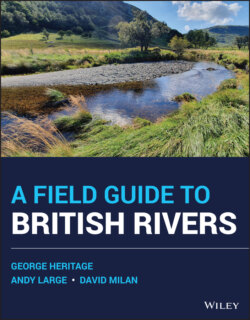Читать книгу A Field Guide to British Rivers - George Heritage - Страница 18
2.3 Functional Classifications
ОглавлениеAs has already been noted, rivers display a diverse continuum of channel patterns and forms. This continuum results from complex processes of flow‐induced sediment erosion, transport, and deposition operating within the constraints imposed by the geology and terrain of the catchment landscape. River channel typologies provide a basis for ordering physical features and processes into groups based on common characteristics associated with these process controls. The Scottish Environmental Protection Agency’s (SEPA) 2012 morphological river typology (Figure 2.1) is based on Montgomery and Buffington’s 1993 and 1997 typologies for montane streams in North America. This has been modified by SEPA to include lower gradient channels found in the United Kingdom. The typology is process‐based, i.e. channel sub‐types are grouped together according to the similar morphological processes present. As such, the channels in each of the groupings have similar sensitivity to external morphological pressures such as channel modifications. Other key features are that the types are considered “natural,” i.e. they assume the channel is unmodified and that types exist at a reach scale, with individual reaches varying considerably in length. This section briefly reviews the most common fluvial classification systems currently in use and for a variety of purposes.
